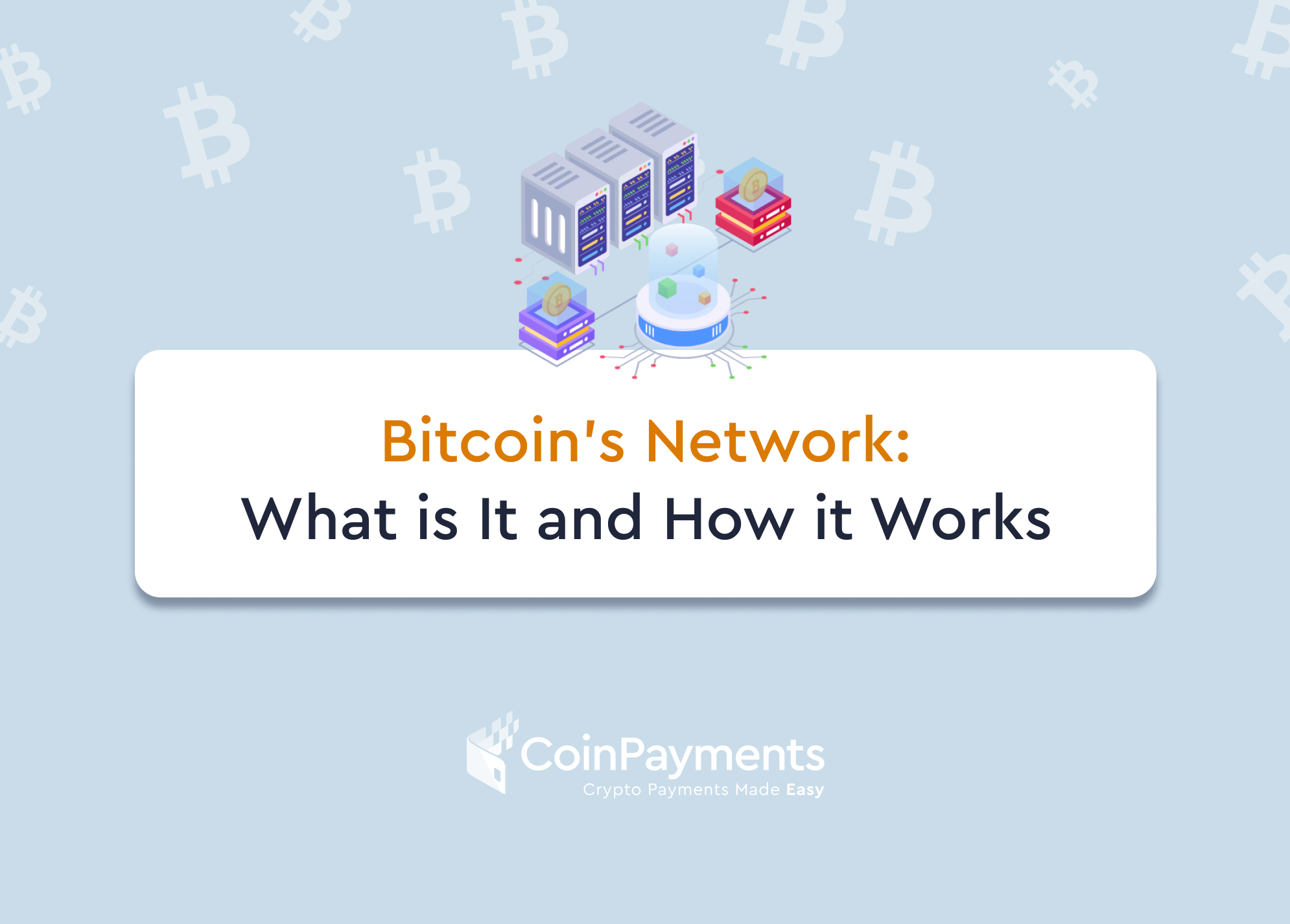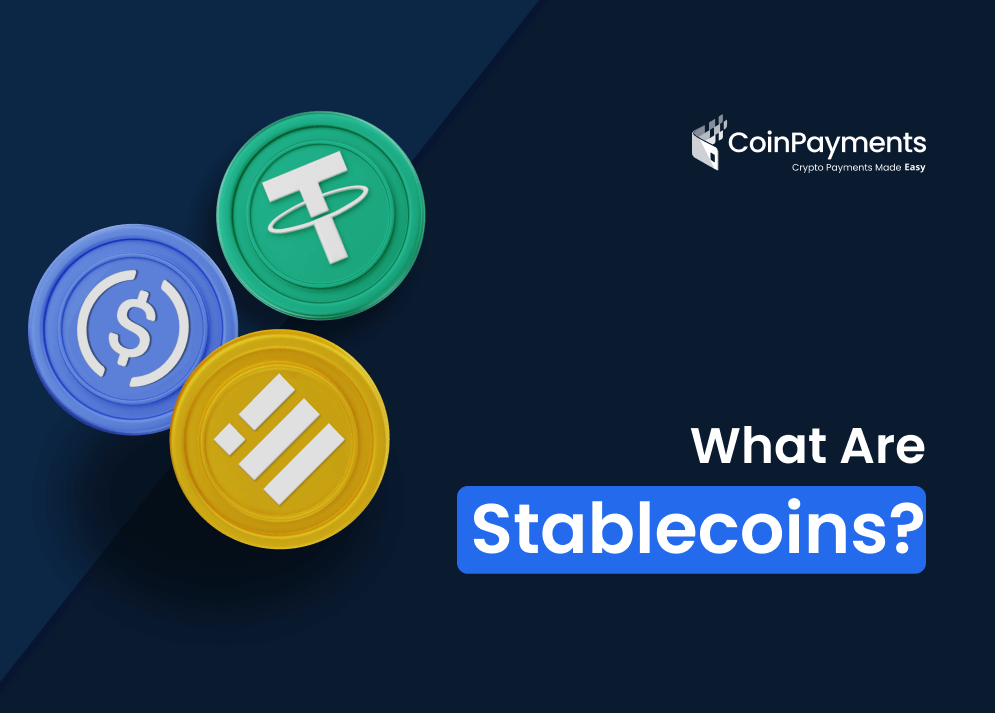
Bitcoin is more popular than ever these days, and not a day goes by without major financial institutions talking about it. But even as individuals and businesses begin to adopt Bitcoin, many still wonder what Bitcoin’s network is and how it works. After all, can you really trust a currency whose principles you don’t fully grasp?
Today, let’s take a deep dive into Bitcoin’s network and break down how it works so you know the true value of this digital currency and trust in its underlying system.
What is the Blockchain?
To fully grasp what Bitcoin is, and how its network works, you need to first understand blockchain.
In a nutshell, blockchain is a unique type of network protocol first described in 2008 by the creator of Bitcoin itself, Satoshi Nakamoto. Although Bitcoin and blockchain are sometimes thought of as synonymous terms, Bitcoin runs on blockchain networks, not the other way around. In addition, there are now thousands of different crypto coins that use the same core cryptographic techniques as Bitcoin’s blockchain.
A blockchain, in essence, is a chain of blocks of information that is arranged chronologically for the purposes of record checking and fidelity. The information in a blockchain “block” can be anything, including ones and zeros, cryptographic hash sequences, personal information, medical records, and much more.
The inherent advantage of a blockchain is that one person puts information in a block and another person receives the block to validate the information. Both parties use special cryptographic hash sequences to ensure that the information on the block is accurate.
A third party is not necessary to validate or confirm the contract (which is a big reason why Bitcoin and blockchains overall are seen as the end of “traditional” currencies).
Put another way, a blockchain is just a list of information. In Bitcoin’s case, this information is often like the below example:
- Person A sent X amount of Bitcoin to Person B
- Person B sent X amount of Bitcoin to Person C
- And so on
The blockchain serves as a record of where money changed hands, how much each transaction included, and which wallet address ended up receiving the Bitcoin or any other currency in the end.
Additionally, Bitcoin’s blockchain network doesn’t necessarily have to be accessed by people. Machines, like AI programs, can also use the Bitcoin network.
Blockchain – The Distributed Ledger
Some people call blockchain networks “distributed ledgers”. Blockchain information is distributed on the Internet, meaning that every transaction is public at all times. Indeed, you can view the public Bitcoin blockchain at this very moment from a number of different sources.
This also means that blockchain networks don’t have a centralized authority. In order to ensure fidelity and financial stability, participants in the blockchain network verify blocks of transaction data through mining (more on that below).
How is a Blockchain Secure?
You might be wondering how Bitcoin and any blockchain network can truly be secure if its information is totally public. However, blockchain networks are completely digital, so there’s no way to physically lock away the information.
But a blockchain network is by its very nature decentralized. Because of this, Bitcoin and other forms of cryptocurrencies don’t need a centralized or third-party authority like a bank or financial institution to preside over the network and its transactions. Instead, everyone using the blockchain network monitors everyone else and verifies transactions.
Note that, under this system, the actors in the blockchain network don’t need to know each other’s identities in real life. Furthermore, cryptographic protocols ensure the privacy of personal information and that chain verification records are legitimate.
These cryptographic protocols are so complex that it would take even the most advanced supercomputers many centuries to break them by force. Because of this, Bitcoin’s network is very resilient to hacking attacks.
Ultimately, it would be very difficult to compromise or cheat on the Bitcoin blockchain network because of its inherently decentralized, encrypted structure.
Understanding “Peer-to-Peer” Network Architecture
Bitcoin operates on a peer-to-peer or P2P type of network architecture. This network architecture technically rests “on top” of the wider Internet or World Wide Web.
Peer-to-peer or P2P just means that all the computers in the network are peers to each other, meaning that there are no administrative computers or terminals that have greater access than the others. There aren’t any special nodes. In addition, all the computers share the burden of providing shared networking services.
This relates very well to Bitcoin’s decentralized goal and blockchain processes. In more technical terms, a peer-to-peer network’s nodes interact using a mesh network and a so-called “flat” topology.
Because of all these elements, peer-to-peer networks are decentralized, open to the public, and are very resilient to hacking or other types of attacks (because the attack would need to take down all the computers in the network to destroy it, not just a single, centralized administrative node).
Interestingly, the earliest Internet architecture was also P2P and all nodes on the initial IP network were equal. But the modern Internet architecture is much more hierarchical (even if Internet protocol itself still has the flat topology described above).
So, in summary, the “Bitcoin network” is a bunch of computer nodes that run Bitcoin’s P2P protocol, which itself is derived from software made by Satoshi Nakamoto. There are lots of other verticals that run on the Bitcoin network. We’ll talk more about the Bitcoin extended network later in this guide.
Types of Nodes in the Bitcoin Network
A “node” is an electronic terminal that can connect to an Internet network. It can be a desktop computer, a mobile device, and so on.
All of the nodes in the Bitcoin network are equal, but they aren’t exactly the same. Indeed, different network nodes may have different roles or functions depending on what they need to support or do. A single Bitcoin node often includes several functions working together, including mining and wallet services, routing, and accessing the blockchain database.
All of the nodes in the Bitcoin network include the core “routing” function, which lets the nodes participate in the blockchain network. Furthermore, all Bitcoin nodes can validate or propagate transactions and blocks. They can also discover and maintain connections with peer network terminals.
What Are Full Nodes?
Full nodes on the Bitcoin network are any nodes that include a full blockchain record with all the previous transactions. In the earliest years of Bitcoin, all nodes were technically full nodes, and the Bitcoin Core client actually runs on a full blockchain node to this day.
However, many new Bitcoin clients don’t maintain a full blockchain and instead are lightweight versions of the primary client.
The main thing to remember about full nodes is that they have an up-to-date copy of the Bitcoin blockchain and all prior transactions. The copies are independently built and verified (starting all the way back with the poetically named “genesis block”).
A full blockchain node provides the terminal user with the purest access to the broader network, and it allows you to independently confirm all verifications without having to trust any other system. However, the full blockchain record requires over 20 GB of disk space for storage.
SPV Nodes
SPV or simplified payment verification nodes are much simpler than full nodes. In fact, lots of modern or casual Bitcoin clients are designed to run on power-constrained devices like smartphones or tablets. Therefore, SPV nodes allow users to access the Bitcoin network without having to store a full blockchain.
Also called lightweight nodes, SPV nodes are becoming more common, particularly for Bitcoin and other crypto wallets. In contrast to full nodes, SPV nodes download block headers and don’t download full transactions for each block. This is significantly smaller than the full blockchain record, but it does rely on other peers and nodes to verify transactions.
Mining Nodes
As their name suggests, mining nodes compete with one another in order to create new blocks in the blockchain. These nodes use specialized hardware and software to solve the complex proof of work processes necessary to verify transactions.
Note that many mining nodes double as full nodes, so they maintain full copies of the blockchain. Other, lightweight mining nodes may participate in mining but don’t carry a copy of the full blockchain.
Technically, there are other types of nodes than these, but the above three Bitcoin network nodes are the most important and the most common.
How New Nodes Enter the Network
New nodes enter the Bitcoin network through network discovery. Once a new node activates, it has to discover other Bitcoin nodes on the network to participate in the blockchain. It does this by discovering an existing node and connecting to it.
Thanks to the decentralized nature of the Bitcoin network, geographic boundaries don’t matter and a new node can select and connect to any existing Bitcoin node. In most cases, the selected node is random. While there aren’t any special nodes for new nodes who wish to find peers, some long-running and stable nodes are classified as so-called “seed nodes” which are often used to quickly find other Bitcoin nodes in the network.
After IP addresses and other information is verified, the new node accesses the Bitcoin network and can participate through mining or can simply look over the blockchain record to verify a transaction.
How Nodes Exchange Inventory or Information
On the Bitcoin network, terminals will exchange inventory or information with one another by attempting to construct complete blockchains. In short, a new node will query other terminals for blockchain records or will attempt to build the blockchain from scratch (if the node user has a lot of time and storage space).
Once this is done, the node can then exchange information with other nodes and all terminals on the network and verify transactions and encryption fidelity thanks to Bitcoin’s unique cryptographic processes.
Transaction Pools Explained
Nodes on Bitcoin’s network almost always maintain a list of temporary and unconfirmed transactions called the transaction pool or memory pool.
In effect, Bitcoin nodes will use this pool to track transactions that are known to the network but haven’t been included in the blockchain, usually because they haven’t been verified by a miner yet. As an example, nodes that hold independent Bitcoin user wallets will use a transaction pool to track any incoming payments that have been received but haven’t been confirmed by the broader blockchain network.
Over time, transactions are received and verified and they are gradually added to the transaction pool. Those transactions are relayed to neighboring nodes to spread throughout the network and be verified.
Think of the transaction pool as the “pending” area for new Bitcoin transactions that still need to be verified through cryptographic and hash processes.
The “Extended” Bitcoin Network
The primary or core Bitcoin network, which runs the Bitcoin P2P protocol, has between 7000 and 10,000 listening nodes that run different variations of the Bitcoin Core client. There are also a few hundred nodes that run other implementations of the core Bitcoin P2P protocol. These include BitcoinJ, BTCD, and Libbitcoin. Then there is a small percentage of Bitcoin nodes that compete in the mining process and create new blocks.
But the extended Bitcoin network includes the core Bitcoin P2P protocol and any other specialized nodes that might run ancillary or focused protocols. For example, these can include pool servers and protocol gateways that connect nodes that run other protocols. Or they might include nodes that run lightweight wallet clients.
In many ways, the extended Bitcoin network allows other nodes across the Web to connect to the Bitcoin blockchain.
Bitcoin Mining Explained
As we dive further into how Bitcoin’s network works, we need to break down Bitcoin mining, which is a key cornerstone for the entire network’s process.
In a nutshell, miners record Bitcoin blockchain transactions on the blockchain and verify the blockchain’s validity for everyone involved. However, to ensure security, Bitcoin’s software creates artificially time-consuming encryption protocols to make recording and verifying a string of transactions more time-consuming than normal.
This added difficulty is important; it prevents people from spoofing or faking transactions to steal cryptocurrencies from other people (i.e. by adding a line to a blockchain block saying that “Person A paid Person D everything they have”).
In the worst-case scenario, a low-difficulty mining network would allow so much fraud that the entire blockchain network would collapse.
So, Bitcoin’s blockchain network relies on so-called proof of work cryptographic techniques, which force miners to use increasingly complex decryption algorithms to verify transactions. Additionally, advancements to Bitcoin’s software organically update the difficulty for miners to limit how quickly transactions can be verified.
At the time of this writing, the network only verifies a new one-megabyte block of transactions every 10 minutes or so. This gives the blockchain network enough time to verify the new block and the ledger that comes with it, and it allows multiple people (again, Bitcoin’s blockchain network is decentralized) to verify a new transaction (or set of transactions) before it is added to the broader blockchain.
Miners use powerful computers and decryption tools to verify transactions and contribute to blockchain stability. In exchange, they are compensated with Bitcoin for their work. Note that this has led to some problems and concerns regarding the consolidation of mining power.
For example, Bitcoin mining farms and organizations in China are in charge of mining most Bitcoin these days. Whether this mining consolidation will affect Bitcoin more broadly in the future remains to be seen. Most recently, many Chinese BTC miners are moving to Texas.
Bitcoin Miner Rewards
Every Bitcoin miner is rewarded for verifying blocks of separate transactions. Called “halving”, miners get a reward in BTC that is gradually cut in half for every 210,000 blocks mined. This takes about four years or so, and it forces deflation because there will only ever be a certain number of Bitcoins released into circulation.
Ultimately, Bitcoin mining rewards will continue to be handed out until 2140 (give or take a few years). Once every new Bitcoin is mined from the core code and rewards halvings stop, miners will then continue to be incentivized for their work by charging network users fees.
In theory, this will lower the inflation rate to zero eventually.
Hash and How it Works with Bitcoin
But how does mining really work with Bitcoin’s blockchain network? It’s fairly technical, but here’s a basic breakdown:
- Bitcoin miners are scattered around the world and aren’t bound to each other (with the exception of some mining collectives, which, as mentioned above, are of questionable good for the broader network)
- Each miner gets a batch of transaction data from new blocks that need to be added to the broader blockchain
- Each miner then runs the transaction data through a special cryptographic algorithm
- This creates a “hash”, which is essentially just a string of random numbers and letters that can verify the validity of the information without revealing the information itself
- For example, a hash could be something like, “0f0iofvdsnf393md98nx98j239218nr98nf8sdnfs” – there is no rhyme or reason to the hash, as it is not a cipher and cannot be broken
- Without the right hash, a viewer can’t know what transactions a given blockchain block includes
How does this work? A hash is generated randomly but, using cryptographic techniques and algorithms, the numbers and letters are still connected to the transaction data in a given block. Therefore, every single letter or number in a given block of information affects the resulting hash encryption.
If even a single letter or number is different or out of place, the hash will be totally different. Because of this, Bitcoin users always know whether someone has changed the information on a block.
Miners find the right hashes for a given block of transaction data. To artificially increase their work time and prevent groups of miners from compromising the network, miners have to fit their hashes into certain frameworks or under certain limitations.
For example, a miner might need to generate the right hash for a block, but the hash has to start with, say, six zeroes. Then they spend a lot of time generating the right hash that meets all the requirements to match the cryptographic security for a given block.
Once a block has been mined, the announcement is sent to the broader network to be confirmed. This may take up to an hour or more. Because there is an uncountable quantity of number and letter combinations to check, it takes a lot of computing power to decrypt even a single block on the blockchain.
As a reward, miners get newly created Bitcoins for mining blocks. The reward has dropped over time through “halving” – the first reward was 50 Bitcoins, but now it’s 12.5 (worth nearly $120,000 as of October 2019).
The newly minted Bitcoins will continue to be rewarded to miners until 21 million Bitcoins are in circulation, at which point no new Bitcoins will be produced.
How Do Crypto Exchanges Work with the Bitcoin Network?
The majority of people who use Bitcoin and other forms of cryptocurrency don’t actually participate in the Bitcoin network. Not only is it time-consuming, but it can also be very expensive to purchase the hardware necessary to run Bitcoin nodes (as described above).
Instead, lots of folks use crypto exchanges or even dedicated Bitcoin exchanges. These exchanges facilitate transactions of Bitcoin and other crypto coins by bringing market participants together. These exchange platforms are becoming more and more popular as more individuals worldwide see the value in crypto and start to purchase some for their own financial security.
CoinPayments is another way to purchase Bitcoin and other cryptocurrencies. As a dedicated crypto payment platform, CoinPayments makes it easy to both buy Bitcoin and accept it for payments for your business goods.
Putting it All Together: How a Bitcoin Transaction Takes Place
We’ve been very technical with this guide so far, but most people who use Bitcoin don’t need to know the ins and outs of blockchains, mining, and hashes. Let’s break down how a transaction takes place on the Bitcoin network.
- Person A buys BTC from Person B
- The transaction is relayed on a block
- The block is encrypted using a special cryptographic algorithm
- The algorithm produces a hash that is verified and “mined” by a Bitcoin miner
- The miner verifies the transaction, so the block is added to the Bitcoin blockchain
- Everyone on the Bitcoin network knows that Person A bought BTC from Person B, as well as how much BTC traded hands, when the transaction took place, and so on
- Person A now knows for certain that the BTC is theirs, even if Person B tries to say otherwise
Bitcoin Wallets and the Role They Play
So far, we’ve avoided explaining how the Bitcoin network understands how and where to send Bitcoin from one individual to another. The answer lies in Bitcoin wallets.
In a nutshell, a Bitcoin wallet is a secure digital repository that includes at least one personal key. Personal keys are encrypted and make wallets very difficult to break into unless a thief has the wallet holder’s key(s) for some reason.
On each block in a blockchain, a transaction sender’s address is found as the “transaction input”. Meanwhile, the recipient address is registered on the broader Bitcoin network as the “transaction output”.
Whenever a new Bitcoin transaction takes place, the parties’ wallets create both of the above values. Then the transaction is registered on the Bitcoin network and the input and output information is recorded alongside the other details of the transaction block, such as the amount of BTC transferred between parties, the date and time at which the transaction took place, and more.
However, it’s important to note that many Bitcoin transactions result in BTC change (say, 0.75 BTC) because of a quirk with the entire system: the amount attached to a Bitcoin transaction isn’t divisible. For example, say that Person A wants to send Person B 0.5BTC, but Person A has a Bitcoin address with 1 BTC registered to it.
In that case, Person A would have to send Person B the entire Bitcoin. The Bitcoin network would make 0.5 BTC in change and send that change to a third, separate transaction address, also under Person A’s control. As a result, the transaction output for the block will have multiple addresses.
Because of this, lots of Bitcoin wallets end up having tons of different addresses that include various amounts of BTC and change. Fortunately, modern wallet software usually includes functions to combine or collapse addresses when necessary.
Where Can You Get a Bitcoin Wallet?
Luckily, there are lots of ways to get a Bitcoin wallet in this day and age. CoinPayments is one such system, and it is superior to getting a dedicated Bitcoin wallet because CoinPayments allows you to store multiple crypto coins simultaneously on the same platform.
This makes it much easier to access your cryptocurrencies whenever you need them without having to combine wallets or do a lot of complex math in your head.
Furthermore, CoinPayments’s crypto wallet is incredibly secure and uses two-factor authentication to ensure that only you can access your coins when needed. That said, there are other Bitcoin wallets available, including those made by third parties and several wallets made by Bitcoin itself.
There’s no inherent advantage to any type of wallet over another, aside from the coins they support and their security features. All wallets can connect to the broader Bitcoin network and participate in the digital economy.
Where Does the Value in Bitcoin Come From?
That’s a question and economists have been struggling to answer for quite a long time. Ultimately, Bitcoin has value for the same reason that fiat currencies like the dollar or the euro have value: because we say they do.
The most basic form of currency is a precious metal like gold or silver, or something else of value to a trader, like cattle, food, or clothing. Fiat currencies like the dollar and euro have value because they are backed by the governments of their home countries (the US and the EU, respectively). In short, they’re “promissory notes” that say they’re valuable because they represent gold or something else in those home countries.
BTC is similar. Bitcoin has value because it is scarce, because people consider it valuable enough to trade for fiat currency or other things, and because Bitcoin (like many other crypto coins) is not controllable by any government or centralized authority.
Will Bitcoin last? Yes, it looks like Bitcoin will remain the most popular crypto coin in the market for a very long time to come. Its value will likely only grow as miners reach the Bitcoin cap and new coins are no longer minted, which should prevent inflation from occurring – something that no other currency can truly claim.
Conclusion
Ultimately, Bitcoin’s network is a very complex system that takes a long time to master. But even a cursory breakdown, like we just went through above, demonstrates the elegance and durability of the network. It also shows how superior such a decentralized P2P network can be compared to traditional financial systems.
In the end, Bitcoin’s network may lead the charge to a new type of currency and more financial freedom for millions or billions of people around the world. If you’re thinking about buying some Bitcoin for yourself, good news – it’s easier than ever through platforms like CoinPayments.
Sources:
What is Blockchain Technology? – IBM Blockchain
Peer-to-Peer (Virtual Currency) Definition – Bitcoin | Investopedia
Running A Full Node | Bitcoin.org
What Is Bitcoin Mining? | Bankrate
Proof of Work (PoW) Definition – Bitcoin | Investopedia
China’s bitcoin miner exodus | CNBC
Bitcoin Halving 101: What Is It and Why Does It Matter? | US News & World



